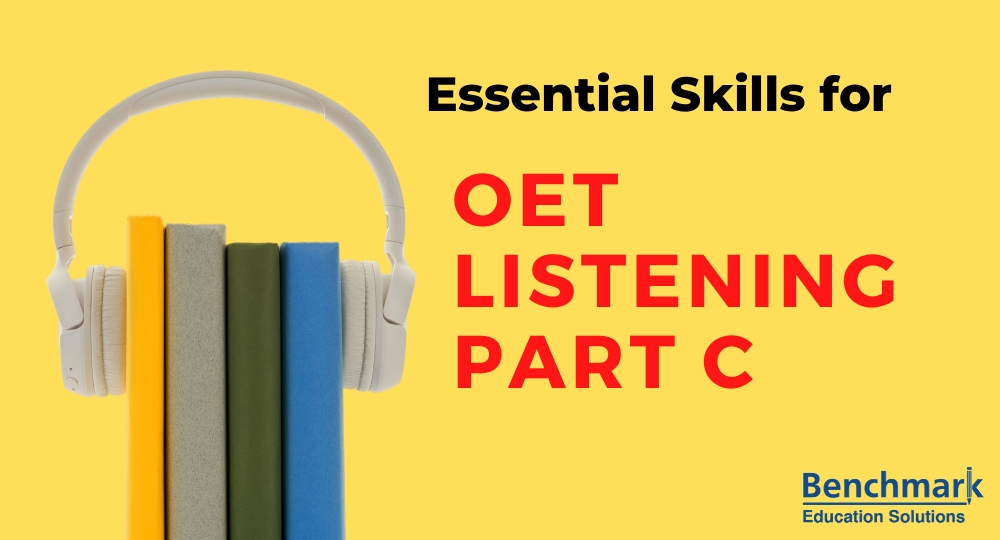Essential Skills for OET Listening Part C


For many test takers, Part C of the OET Listening test is the most challenging. This is because Part C of the exam requires a slightly different set of skills than the other parts of the OET Listening test .
For starters, Part C, no matter what format you decide to take, paper-based, computer-based or the remotely proctored OET at home, or at the test venue, involves the most reading. For each recording in Part C, there are 6 multiple choice questions that you have to answer as you listen. While you do have time before each recording to skim through the questions, you will need to be re-reading and eliminating answers as you hear new information in the recording. For many, this type of multi-tasking is very difficult, and so it is a skill that should be practiced before you take the OET.
As you can imagine, the multi-tasking required in Part C also means that you have to maintain a high level of concentration, which can be difficult during the four to five minutes of each recording. It might be difficult to concentrate on the recordings because the format of the recordings and their topics are quite different from what most nurses ,doctors, physiotheraphist and Pharmacist listen to on a day-to-day basis.
Unlike the consultations between patients and doctors in Part A or the conversations between nurses, doctors and other health care professionals in Part B, the recordings in Part C of the OET Listening test are presentations or interviews on a variety of topics generally related to healthcare. For example, you may hear a nurse talking about proposals for safety measures, a doctor talking about how to identify a certain type of disease or a dietitian discussing the nutritional needs of elderly members of the community. For this reason, it is recommended that you listen to different types of podcasts as this will help you to practice listening to longer conversations or monologues and it will help you to become familiar with other specialities.
Another skill that is particularly important on Part C of the OET Listening test is being able to recognize when the recording has moved from one question to another. Generally, the questions of any multiple choice listening exam will go in order of the topics discussed in the listening. However, it is up to you, the test taker, to recognize when the speaker or speakers have transitioned from one topic to another. When you do samples of the OET Listening test, try to identify words or phrases that speakers use to change topic or give more detail about the topic they are currently discussing. You can do this as you listen to the samples and then check the transcripts to get a better idea of how the recordings of Part C are organized.
A final tip as you complete practice exams and samples is to become very familiar with the instructions for each part of the test as well as the rules and regulations. This will help you to stay concentrated on exam day as you will be able to focus more on listening to the recordings and less on figuring out what you are supposed to do. This includes feeling comfortable with the format of the test you will be doing, such as a paper-based test, a computer-based test or the new OET at home. While the content of all formats is the same, the way you interact with each one is a bit different. For example, if you choose to take the test on a computer, you should feel comfortable with typing your responses.
***
If you need practice test papers, you can get the Benchmark OET Listening Practice Tests here.













Informative
Hello everyone’s, please let me a question. I have taken OET test in 3 times and I failed the listening parts in all of them. What preparation course can you recommend me for the listening part please?
Thank you.
simply use these OET listening practice tests